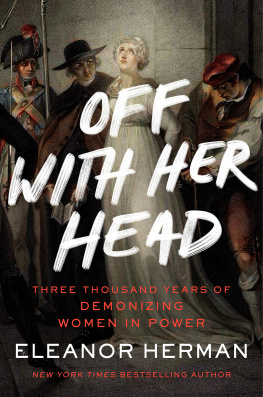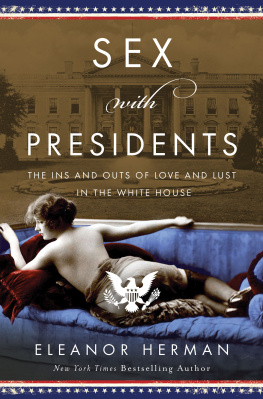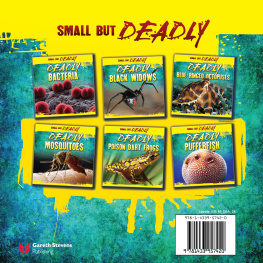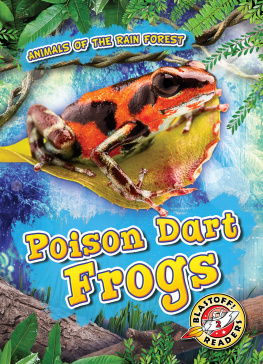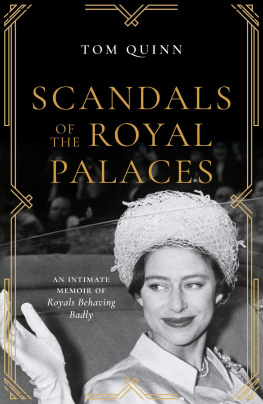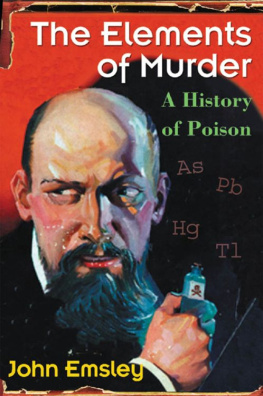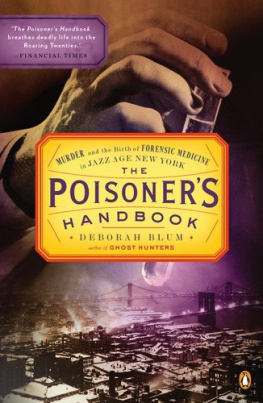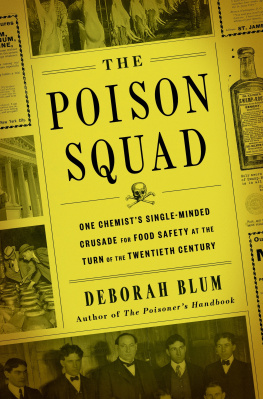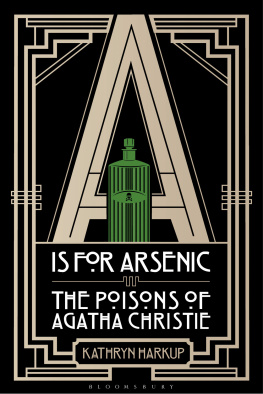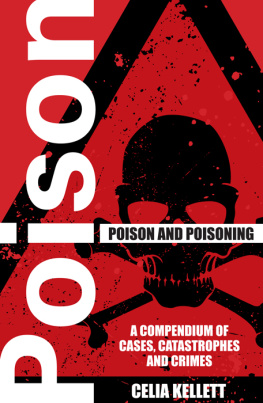Contents
Guide
Pagebreaks of the print version

The author and publisher have provided this e-book to you for your personal use only. You may not make this e-book publicly available in any way. Copyright infringement is against the law. If you believe the copy of this e-book you are reading infringes on the authors copyright, please notify the publisher at: us.macmillanusa.com/piracy.
To Vladimir Kara-Murza, Russian activist and journalist, who has survived Kremlin poisoning twice, living proof that the royal art of poison did not die out with the Baroque era but is alive and well in the digital age .
For twenty years beginning in 1995, I eagerly read news reports of the University of Marylands annual Historical Clinicopathological Conference, where experts investigated the medical mysteries of famous dead people. Doctors became sleuths, trying to determine why, in 4 BC, King Herod the Great had gangrenous private parts; whether infected pork chops killed Mozart in 1791; and if Abraham Lincoln could have survived his 1865 assassination if he had been whisked away in a time-traveling ambulance to a modern hospital.
The conference was the brainchild of Dr. Philip A. Mackowiak, an infectious disease specialist. Currently the Carolyn Frenkil and Selvin Passen History of Medicine Scholar-in-Residence at the University of Maryland School of Medicine, he has written two fascinating books, Post Mortem: Solving Historys Great Medical Mysteries , and Diagnosing Giants: Solving the Medical Mysteries of Thirteen Patients Who Changed the World . Dr. Mackowiak is the Sherlock Holmes of historical who-done-its, orin the case of natural causeswhat-done-its.
As I started to write this book, I realized I needed a physician expert at diagnosing the final illnesses of long-dead people to check my work, and who better than Dr. Mackowiak? Doctors email addresses are easy to find, but whether they answer you in a positive manneror at allis another matter. Luckily for me, Dr. Mackowiak responded with enthusiasm and has been of invaluable help throughout this project. Not only did he check the entire manuscript for medical malpractice on my part, he even corrected my grammar.
I am grateful to Donatella Lippi, professor of the History of Medicine at the University of Florence, who readily answered my questions about her conclusion of arsenic poisoning in the deaths of Grand Duke Francesco I de Medici and his wife, Bianca Cappello, and provided me with scholarly articles and photographs.
A big thank-you to Professor Jens Vellev of Aarhus University in Denmark, who exhumed and studied the remains of famed astronomer Tycho Brahe. He sent me an in-depth article of his findings and cleared up my many questions about the conflicting conclusions on Brahes cause of death.
It was a delight to work with the staff of the University of Virginias Claude Moore Health Sciences Library, who helped me locate obscure medical journal articles on exhumations of royal personages, their modern autopsies, and the shocking results.
Many thanks to my friend Larissa Tracy, professor of medieval literature at Longwood University, for providing me with an early look at her edited collection Medieval and Early Modern Murder . I found particularly helpful the chapter Poisoning as a Means of State Assassination in Early Modern Venice, by Matthew Lubin of Duke University and the University of North Carolina at Chapel Hill.
And, as always, a thousand thanks to my long-suffering husband, Michael Dyment, who over the course of my writing this book has had to listen to details of appalling illnesses, cracking open moldy coffins, and medical tests on rotten bones and ghastly mummies, often over dinner. You didnt know you were getting into this when you married me, did you?
In 1670, at the glittering court of Louis XIV, the beautiful twenty-six-year-old princess Henrietta, duchesse dOrlans, sips from a cup of chicory water, clutches her side, and cries out, I am poisoned! Her ladies undress her and put her to bed, where she vomits and soils herself repeatedly. The ceaseless pain is like a thousand red-hot knives slashing and burning her insides. She writhes in a tangle of sweat-soaked sheets, screaming. She begs God to make the pain stop. She whimpers and groans, and falls silent.
By the time the princess dies, nine horrifying hours after the initial attack, it is a mercy. Given her symptoms, it appears that she was indeed poisoned. The suspected murderer? Her husband, Philippe, duc dOrlans, the kings vindictive brother, furious at her for exiling his male lover.
In researching my books on royal love affairs, I was intrigued by numerous such stories of the young, the beautiful, the talented and powerful, cut down before their time. For centuries, almost every death of a relatively young royal was rumored to have been caused by poison. But was it poison? Or had they all died of natural causes?
I decided to return to this absorbing topic, which so adeptly combines my love of forensic crime shows with my passion for the past. I soon found myself up to my elbows in the grisly, the astonishing, the tragic, and the hilarious. I learned how to perform a sixteenth-century autopsy and embalmingnot something for the faint of heart. Wide-eyed, I read Renaissance beauty recipe books whose ingredients included mercury, arsenic, lead, feces, urine, and human fat. I dove into modern scientific papers on the exhumations of royal bodies found to be riddled with a variety of toxic materials. And I discovered the elaborateand to us comicalpoison-prevention protocols at royal courts.
As I delved into this world, I learned that palaces were bursting with many kinds of poison, not all of them deadly doses of arsenic intended to kill. Gazing at the gorgeous portraits of centuries past, we dont see what lies beneath the royal robes flashing with diamonds: the stench of unwashed bodies; the lice feasting on scalps, armpits, and private parts; the lethal bacteria from contaminated water and poorly prepared food; and the excruciating cancers eating away at vital organs. We cant smell the nauseating odors of overflowing chamber pots or the urine-soaked staircases where courtiers routinely relieved themselves. We dont glimpse the barbaric medical treatments more dangerous than the original illness itself, or elixirs designed to beautify that sometimes killed.
To bring you into this world of sublime beauty and wretched filth, I first investigate the palace poison culture of prevention, protocols, and antidotes, followed by chapters on deadly cosmetics, fatal physicians, and the royals perilously unhealthy living conditions. I then examine twenty cases of royal personages rumored to have been poisoned, from the renowned, such as Napoleon and Mozart, to the obscure, such as a fourteenth-century Italian warlord and a sixteenth-century queen of Navarre, household names in their own time but mostly forgotten in ours.
While palace physicians were often completely baffled when it came to determining the cause of an illness and death, modern science can shed light on what really happened to our tragic princess and many others who died mysteriously. In these chapters I examine their lives, their deaths, and their exhumations and modern analyses, if these have occurred; if not, I provide a modern diagnosis of their symptoms and probable cause of death.
What I have found is that people living in terror of poison were, in fact, poisoning themselves every day of their lives, through their medicine, cosmetics, and living conditions. At Europes dazzling royal courts, beneath a faade of bejeweled beauty, there festered illness, ignorance, filth, andsometimesmurder.





